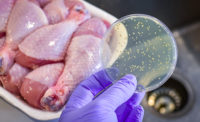U.S, Department of Agriculture and the Food and Drug Administration are tasked with the responsibility of ensuring the safety of the U.S. food supply. These agencies do so by creating and implementing new guidance, policies, and rules, by conducting food facility inspections (whether continuous or periodic), by occasionally performing environmental or finished product sampling during those inspections, and then by performing Whole Genome Sequencing (WGS) on positive samples that they find. In turn, WGS will generate a precise genetic signature that is uploaded forever into the GenomeTrakr database, where it can be compared to other isolates collected over time from food processing facilities, food company products, and clinical patients.
In turn, FDA and USDA have begun to discuss how WGS can be increasingly leveraged by the agencies and food companies to identify and solve food safety issues. In FDA’s New Era of Smarter Food Safety Blueprint, the agency acknowledges that “[it] wants to tap into new technologies [such as WGS] and integrate data streams to identify outbreaks and trace the origin of a contaminated food to its source in minutes, or even seconds, speeding our response when public health is at risk.” USDA is also now using WGS while conducting its inspection and investigative activities. These efforts have and will also continue to identify possible ways to encourage industry to adopt WGS as a tool in its own root source investigations to find niche organisms when food facilities identify pathogens in the food processing environment or in finished products. By doing so, the regulators argue, the overall food supply can become more safe.
So, should food companies actually consider employing WGS as a tool in their routine investigations of positive environmental or finished product samples? Well, there is a lot of debate surrounding this question. On the one hand, all honest food safety professionals would agree that the use of new and cutting-edge tools to identify the source of resident strains in any food processing environment should be embraced if it will help identify the underlying issue and eliminate the source. But, with that said, in today’s current regulatory environment, without any accepted understanding or established rules regarding the consequences of finding positives and using WGS, companies could fear that they are exposing themselves to significant and unwanted regulatory or other exposure.
Imagine, for instance, if a company was using WGS to locate the source of a resident strain, but was not immediately successful because it is operating in a legacy facility with legacy equipment. Would the agencies use that data over time to penalize the company for not completely eliminating the resident strain? Alternatively, what if the strain cultured from the processing environment matched a clinical isolate in the GenomTraker database? Would the company be obligated to halt production, or inform the relevant agency with oversight of its products?
These are only some of the significant and nuanced questions that still need to be answered. If industry can be incentivized by the regulators to adopt WGS, and at the same time receive clear guidance with certain clear protections when it is employed, I do believe that it can be successful. In the absence of any rules or clear guidance with industry safeguards, however, strongly urging or forcing WGS upon industry could quickly become a whole can of worms.





Report Abusive Comment